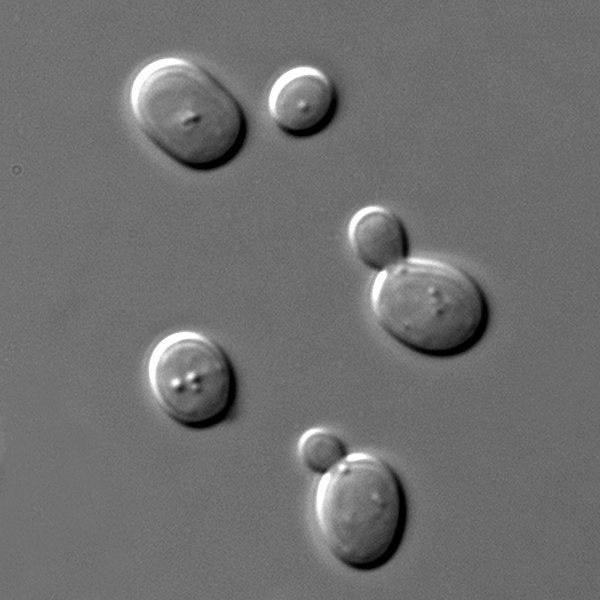 |
| Yeast cells under a microscope (Saccharomyces cerevisiae) |
Sterols, more commonly known as steroids, such as cholesterol, are common components of cell membranes. They also require at least 10 molecules of free oxygen for synthesis. If there was not an available source of oxygen, the creation of such a molecule would have been very unlikely, let alone an entire cell membrane composed of tens of thousands of sterol molecules. This is where the oxygen oases come in. If they existed, they would have given early life enough oxygen to survive, grow and reproduce.
To test the theory, they set up an experiment using yeast. Yeast uses a combination of oxygen and sugars to create ergosterol - its primary sterol. The yeast can reproduce without oxygen provided that a source of ergosterol is provided. To find the lowest level of oxygen which yeast can consume, Waldbauer grew yeast cells in an environment containing no oxygen, ergosterol and glucose containing a mildly radioactive form of carbon - carbon 13 - as a tracer to see whether the yeast were consuming oxygen.
The team found that the yeast happily took up the ergosterol, but left the glucose. However when a truly negligible, molecular amount of oxygen was introduced to the sample, the yeast began to manufacture bio-synthesised ergosterol. The team could distinguish this from the provided sample due to the contained and traceable amount of carbon 13 within the glucose that the yeast cells used in conjunction with the provided trace amount of oxygen to produce ergosterol.
This experiment shows that early life could have lived without the presence of oxygen. However to become complex, they would have required oxygen. These possible oxygen oases might have played a major role in the evolution of complex life, once again changing the story of our planet's greatest marvel.